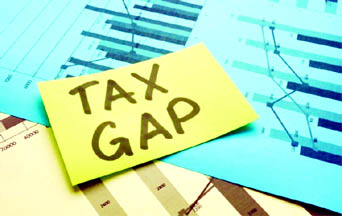NEW YORK (TIP)- The amount of tax money owed but not paid to the IRS is set to keep growing, according to projections published by the federal tax collection agency on Thursday, October 12. For tax years 2021 and 2020, the latest to receive such IRS estimates, the projected gross “tax gap” soared to $688 billion and $601 billion, respectively. That marks a significant jump compared to years past — with gross tax gap projections standing at $550 billion for 2017-2019 and $496 billion for 2014-2016.
One of the IRS’s biggest challenges is making sure that people actually pay their taxes. While agency data shows that the vast majority of Americans pay their taxes voluntarily and on time, hundreds of billions of dollars in unpaid taxes pile up each year — and tax gap estimates keep getting bigger. IRS Commissioner Danny Werfel said that the rising tax gap estimates “underscores the importance” of more compliance efforts. Part of the $80 billion the IRS received from the Biden administration’s Inflation Reduction Act is being used for that purpose. “We are adding focus and resources to areas of compliance concern, including high-income and high-wealth individuals, partnerships and corporations,” Werfel said in a statement. “These steps are urgent in many ways, including adding more fairness to the tax system, protecting those who pay their taxes and working to combat the tax gap.” The tax gap could also be bigger than expected. Some prior-year projections have already been revised higher. The gross tax gap for 2017-2019, for example, was initially expected to be $540 billion, but climbed $10 billion in later estimates. Estimates for 2021 assume that noncompliant behavior hasn’t changed since the most recent 2014-2016 audit, IRS officials noted in a call with reporters — meaning that current projections don’t reflect filing behavior seen in the pandemic.
Source: AP
Gap between US income taxes owed and paid is set to keep growing, IRS says
